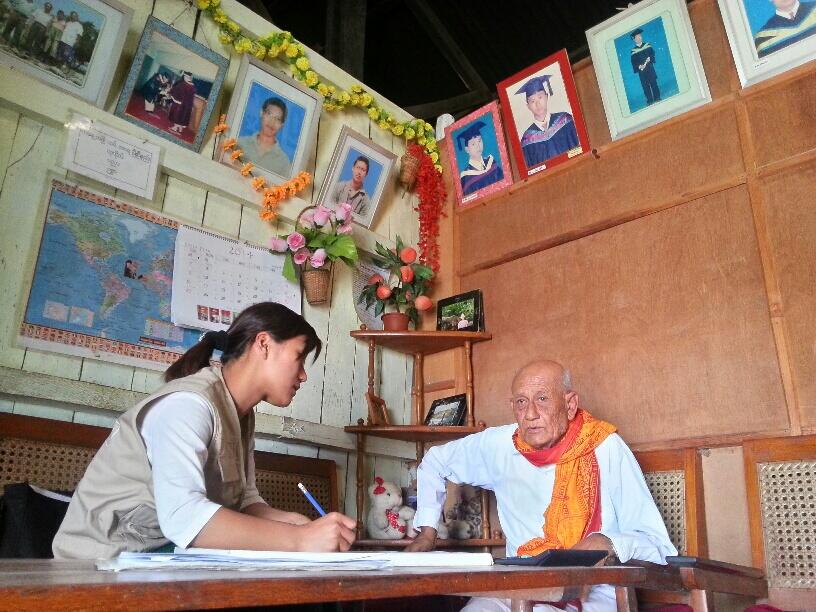FALAM TOWNSHIP, Chin State -- On a glorious hilltop overlooking town an array of colourful flowers meets the eye and the sweet smell of burning incense fills your nostrils as you walk inside the temple grounds. On the right side and coming from deep inside the temple, you can just make out the sound of bells softly chiming.
Inside the ornate temple sits U Beduram, 76, the spiritual leader of the Falam Hindu community. He is one of 65 ethnic Gurkhas living in Falam township. Like his whole family, he was born in Myanmar and has never set foot in Nepal.
U Beduram speaks several languages fluently, including local Chin dialect Lai, Gurka, English and Burmese.
Respondents to Myanmar’s 2014 census are being asked to identify their ethnicity. Gurkha is not on the census list of ethnic groups, and authorities have suggested that Gurkhas use the category Nepali, since their forbears migrated from Nepal.
But U Bedu does not want to be classified as Nepali.
“Both ethnicities are Hindu, but we are not the same, we are Gurkhas, not Nepali,” he says.
“When the enumerator came to my house on 3 April, she asked me if I wanted to the listed as Nepali. I said no and that I wished to self-identify as Gurkha using code 914 on the questionnaire form under Others. That was all, and that is what I saw her write down,” he says.
He stresses that it is important for him and his community to be registered as Gurkhas. He hopes this will help bring better opportunities such as education for their children. Currently all the Gurkha children attend regular Chin language schools, but during the summer break, they study Gurkha language at the temple.

Ma Thian Len Ting, a 30-year-old primary school teacher, was the enumerator who interviewed the Gurkha Spiritual leader at the Falam Hindu Temple. She speaks both the Zomi Chin dialect and Gurkha.
“Most of the 140 households in my enumeration area chose to be listed as Chin ethnicity using the 401 code, but some did not want to be listed as such so I wrote them down as Others using the 914 code. Then there were no problems,” she says.
Unlike many of her fellow enumerators, Ma Thian Len Ting did not have to travel to Falam Township’s far-flung rural areas. “I am happy there were no natural disasters during the data collection, as we often have landslides in the area. And I’m glad I did not have to walk for miles into the hilly mountainous areas,” she adds.
On Census Night, 29 March, Ma Thian Len Ting was at home with her family in Falam. Although she is an enumerator, she did not count her own family.
“Another enumerator came to my house and interviewed my father, as head of the household,” she explains.
She hopes that once the census count is over the data collected will show the correct size of the Myanmar population and that it will prove to be beneficial to the whole country. “This is what we were taught at the enumerator training.”
The Myanmar census took place from 30 March to 10 April 2014.


